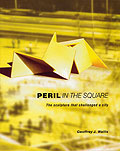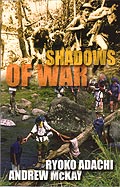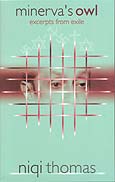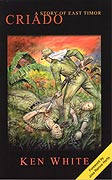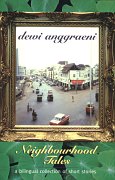
While Indonesia and Australia form the focus and location of Dewi Anggraeni’s works, this collection of short stories, Neighbourhood Tales, explores themes shared by people in every country, every culture. Stories of love, stories of mystery and stories of the family can be found throughout the world, and this bilingual book captures the local flavour for both Australian and Indonesian readers.
Neighbourhood Tales vary widely from the passionate, sensuous world of the composer in “Music for Libretto”, through the dark haunting flashbacks to the shared past of Australia and Indonesia in “The Hut”; from the unexpected humour of marital instability in “Family Law”, to the touching discovery of a child’s special gift in “Synesthesia”.
Dewi paints word pictures which carry her readers inside the relationships between her characters, between her characters and their surrounds, between her neighbouring home countries – Australia and Indonesia.
This book presents a new approach in bilingual books – the stories have not been translated from the language in which they were first written. The twelve stories have all been written twice, once in English, once in Indonesian. In re-writing her stories in the second language, Dewi has allowed for the differences in writing conventions and social mores between Australia and Indonesia.
What is acceptable in Australian writing is not always accepted in Indonesia. What is plausible in Indonesian writing can sometimes seem far-fetched or fanciful in Australia. This makes the collection eminently suited to students and others interested in learning about the culture of Indonesia, not just the language.
July 2001, 248pp
Paperback, 216 x 138 mm
Fiction, 1st Edition
ISBN 0 9585805 7 X
RRP $aud 21.95
ISBN-13 978 0958580571
The Author
As a published writer of novels, short stories and essays, and an established role as a regional journalist, Dewi Anggraeni is well-known in both Australia and Indonesia, especially among those in both countries who maintain an interest in regional affairs.
Her major works have been published by Indra Publishing:
Who Did This To Our Bali?, 2003
Snake, 2003
Neighbourhood Tales: A Bilingual Collection, 2001
Journeys Through Shadows, 1998
Stories of Indian Pacific, 1992
Parallel Forces, 1988
The Root of all Evil, 1987
Dewi’s poetry, short stories and essays appear in anthologies from a range of publishers:
“Journey to My Cultural Home” in Weaving a Double Cloth; Stories of Asia Pacific Women in Australia (Ed. Myra Jean Bourke, Susanne Holzknecht and Annie Bartlett, Pandanus Books, 2002)
“Exposing Crimes Against Women” in The Last Days of President Suharto (Ed. Edward Aspinall, Herb Feith and Gerry van Klinken, Monash Asia Institute, 1999)
“Rejected by Ibu Pertiwi” in Motherlode (Ed. Stephanie Holt and Maryanne Lynch, Sybylla Feminist Press, 1997)
“From Indonesia to Australia and Back: Cultural Sensitivities” in Crossing Cultures: Essays on Literature & Culture of the Asia-Pacific (Ed.Bruce Bennett, Jeff Doyle, Satendra Nandan, Skoob Books, 1996)
“Illegal” in Our Heritage (Ed. Satyagraha Hoerip, Pustaka Binaman Pressindo, 1993)
“Irritations” in Striking Chords (Ed. Sneja Gunew and Kateryna O Longley, Allen & Unwin, 1992)
“Mal Tombé” in Beyond the Echo (Ed. Sneja Gunew and Jan Mahyuddin UQP, 1988)
“A Foreigner in East Gippsland” in Up From Below (Women’s Redress Press Inc., 1987)
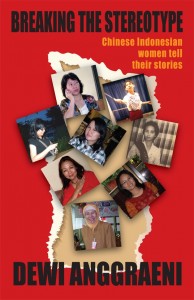 Dewi Anggraeni’s discussion about the integration of Chinese descent people into Indonesian society, based on interviews with eight Chinese Indonesian women, Breaking the Stereotype, is now available as an ebook.
Dewi Anggraeni’s discussion about the integration of Chinese descent people into Indonesian society, based on interviews with eight Chinese Indonesian women, Breaking the Stereotype, is now available as an ebook.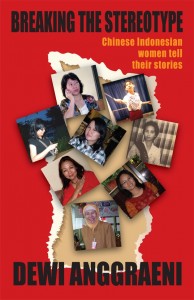
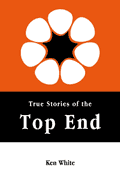 True stories from the Northern Territory, not all of which found their way into the press of the time. From the humorous to the harrowing, including:
True stories from the Northern Territory, not all of which found their way into the press of the time. From the humorous to the harrowing, including: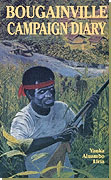 The revealing journal of an ex-Papua New Guinea Defence Force Officer, detailing against the historical background, the inside story of military operations against the Bougainville Revolutionary Army (BRA).
The revealing journal of an ex-Papua New Guinea Defence Force Officer, detailing against the historical background, the inside story of military operations against the Bougainville Revolutionary Army (BRA). On October 12, 2002, Bali seemed to crumble overnight, when hundreds of tourists and locals who were enjoying themselves became victims of two horrific bomb blasts. The bombs took the lives of 202 people – 88 of whom were Australians, and severely injured many more.
On October 12, 2002, Bali seemed to crumble overnight, when hundreds of tourists and locals who were enjoying themselves became victims of two horrific bomb blasts. The bombs took the lives of 202 people – 88 of whom were Australians, and severely injured many more.